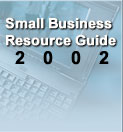 |
| |
| |
| |
| |
| |
| |
| |
| |
| |
| |
| |
| |
| |
| |
| |
|
Changing Your Business or Getting Out of BusinessSelling Your BusinessThe sale of a business is not usually a sale of one asset. Instead, all of the assets of the business are sold. Generally, when this occurs, each asset is treated as being sold separately for determining the treatment of gain or loss. A business usually has many assets. When sold, these assets must be classified as capital assets, depreciable property used in the business, real property used in the business, or property held for sale to customers, such as inventory or stock in trade. The gain or loss on each asset is figured separately. The sale of capital assets results in capital gain or loss. The sale of real property or depreciable property used in the business and held longer than 1 year results in gain or loss from a section 1231 transaction (discussed in Chapter 3 of Publication 544). The sale of inventory results in ordinary income or loss. Partnership Interests. An interest in a partnership or joint venture is treated as a capital asset when sold. The part of any gain or loss from unrealized receivables or inventory items will be treated as ordinary gain or loss. For more information, see Disposition of Partner's Interest in Publication 541. Corporation Interests. Your interest in a corporation is represented by stock certificates. When you sell these certificates, you usually realize capital gain or loss. For information on the sale of stock, see chapter 4 in Publication 550. Corporate liquidations. Corporate liquidations of property are generally treated as a sale or exchange. Gain or loss is generally recognized by the corporation on a liquidating sale of its assets. Gain or loss is also generally recognized on a liquidating distribution of assets as if the corporation sold the assets to the distributee at fair market value. In certain cases in which the distributee is a corporation in control of the distributing corporation, the distribution may not be taxable. For more information, see Internal Revenue Code section 332 and its regulations. Allocation of consideration paid for a business. The sale of a trade or business for a lump sum is considered a sale of each individual asset rather than a single asset. Except for assets exchanged under the like-kind exchange rules, both the buyer and seller of a business must use the residual method (explained later) to allocate the consideration to each business asset transferred. This method determines gain or loss from the transfer of each asset and how much of the consideration is for goodwill and certain other intangible property. It also determines the buyer's basis in the business assets. The residual method must be used for any transfer of a group of assets that constitutes a trade or business and for which the buyer's basis is determined only by the amount paid for the assets. This applies to both direct and indirect transfers, such as the sale of a business or the sale of a partnership interest in which the basis of the buyer's share of the partnership assets is adjusted for the amount paid. A group of assets constitutes a trade or business if goodwill or going concern value could, under any circumstances, attach to them. Consideration. The buyer's consideration is the cost of the assets acquired. The seller's consideration is the amount realized (money plus the fair market value of property received) from the sale of assets. Residual method. The residual method provides for the consideration to be reduced first by the amount of cash, demand deposits, and similar accounts transferred by the seller. The amount of consideration remaining after this reduction must be allocated among the various business assets in a certain order. The allocation must be made among the following assets in proportion to (but not more than) their fair market value on the purchase date in the following order.
Example. The total amount paid in the sale of Company SKB is $21,000. No cash or demand deposits were sold. The company's U.S. Government securities had a fair market value of $3,200. Other tangible business assets had a fair market value of $15,000. Of the $21,000 paid for Company SKB, $3,200 is allocated to U.S. Government securities, $15,000 to other tangible business assets, and the remaining $2,800 to section 197 intangibles in the order shown in the previous list. Agreement. The buyer and seller may enter into a written agreement as to the allocation of any consideration or the fair market value of any of the assets. This agreement is binding on both parties unless the IRS determines that the amounts are not appropriate. Reporting requirement. Both the buyer and seller involved in the sale of business assets must report to the IRS the allocation of the sales price among section 197 intangibles and the other business assets. Use Form 8594, Asset Acquisition Statement Under Section 1060, to provide this information. The buyer and seller should each attach Form 8594 to their federal income tax return for the year in which the sale occurred. Dispositions of Intangible Property Franchise, Trademark, or Trade Name
Important References Publication
544
Sales and Other Dispositions of Assets |